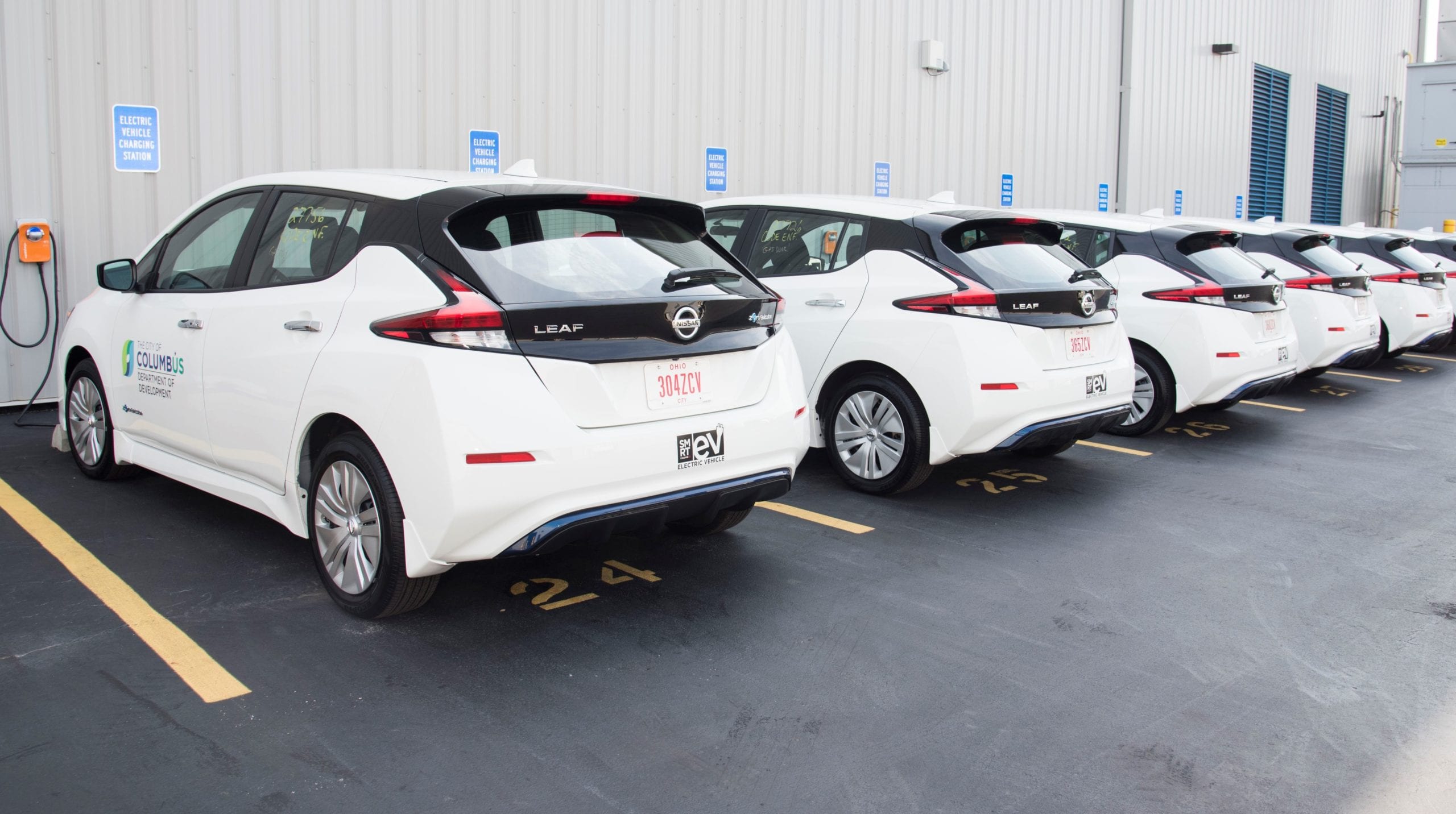2021 has already been a banner year for the electrification of transportation. For those of us who have been working to advance the deployment and adoption of electric vehicles and charging infrastructure over the past decade or more, progress could feel slow at times. But the first months of this new year have had a distinctly new feeling of growing momentum, with groundbreaking announcements from some of the biggest players in the public and private sectors. And while the winds have most certainly shifted, there is still much work to do if we are to realize the immense promise that widespread electrification holds for our national security, public health, and economic development.
President Biden Sent a Clear Signal that EVs are the Future
On January 26, President Biden announced his intention to electrify the federal fleet. At 645,000 vehicles strong, the federal fleet is a heavyweight customer with immense purchasing power. The president’s announcement sent a clear signal to industry and the markets that there is a future for electric transportation. On January 28, General Motors publicized plans to be carbon neutral by 2040 and stated it would aspire to eliminate tailpipe emissions from all its new light-duty vehicles by 2035. The company followed up with a star-studded Super Bowl ad declaring a friendly competition with Norway, where EV sales represented 54% of light-duty vehicle purchases in 2020.
General Motors, Ford Motor Company, Audi, Amazon, and Volvo have made recent commitments to light-duty EVs.
Over the course of the following two weeks, Ford Motor Company committed to investing $22 billion into EVs, Audi introduced its new all-electric e-tron GT, Amazon announced that it has started testing its first custom electric delivery vehicles in Los Angeles a year after revealing its intentions to purchase 100,000 EVs from Rivian, and the U.S. Department of Energy’s Alternative Fuels Data Center listed more than 97,500 non-residential EV charging outlets across the country.
All these developments are major steps forward on the road to electrify our transportation system. But that doesn’t mean it’s time to put our feet up. States and cities will continue to be laboratories of innovation in the way we move, and their continued progress must remain an intense area of focus for policymakers, advocates, industry partners, EV enthusiasts and other stakeholders.
EVs are in Top Policy Categories
With state legislative sessions in full swing, there is a great deal of policy activity in the transportation electrification arena. States like California, New York, Oregon, and Massachusetts are leading the way, and a second wave of states, such as Pennsylvania, North Carolina and Nevada, is following quickly behind. Here are some of the top categories of policies to keep an eye on at the state level, and in some cases at the local level, from both legislative and executive branches:
Several states are leading the way with policy activity in transportation electrification.
- Vehicle and charging incentives offered by utilities
- Financial incentives to purchase or install charging stations
- Financial incentives (e.g., sales tax exemptions, rebates, tax credits) offered by states to encourage all-electric vehicle adoption
- Allowance of EV sales directly from manufacturer to consumer, without requiring dealership involvement
- Defense against punitive annual EV registration fees that serve as counterproductive barriers to EV adoption
- Regulatory or legal certainty about the regulatory handling of third-party charging service providers and their ability to sell charging services on a per-kWh basis without being subject to utility-style regulations
- State programs that commit to following the California Zero-Emission Vehicle program
- Participation in the Multi-State Medium and Heavy-Duty Zero Emission Vehicle Memorandum of Understanding
- Government agency commitments or requirements to deploy a specific number of electric vehicles or to electrify a designated percentage of light-duty and/or medium/heavy-duty vehicles in public-sector fleet(s)
- EV-ready building codes that require charging station installation or charging station readiness and contain requirements for the minimum number of EV-ready parking spaces for new and existing buildings
- Low-carbon or clean-fuels standards, which require an increasing share of low-carbon fuels used by the transportation sector.
In the Electrification Coalition’s EV Policy Showroom, we provide a free, interactive, nationwide database of state EV-related policies, so policymakers and stakeholders can quickly and easily monitor the activities of other states, research successful programs and replicate them in their own states.
EC provides a free, interactive database of state EV-related policies, so stakeholders can monitor activities in other states.
EV Roadmaps Outline the Path Forward to Electrification
Another critical focus area at the state and local levels is the development, refinement and implementation of strong EV roadmaps – planning documents that chart the path forward to electrification. These documents should outline EV and EVSE incentive programs, utility rate structures, consumer education programs, equity considerations, the roles of various public agencies and EV and charging infrastructure targets.
Funding and financing for EVs and charging equipment also remain a priority policy area if we are to successfully accelerate EV adoption. It’s well established that an EV can save a consumer or fleet thousands of dollars, relative to a conventional vehicle. But an EV’s higher initial cost may serve as a barrier. However, consumers and fleets can take advantage of federal, state, local and utility resources, as well as legal settlements state and regional carbon market revenues and monetization of vehicle-to-grid capabilities to get over the hump.
When local, state and federal policies and programs are robust, well designed and well funded, widespread adoption will follow. Policymakers and electrification allies must continue pushing forward in order to ensure that the United States is a leader in transportation electrification and that we reap the many benefits it has to offer.



